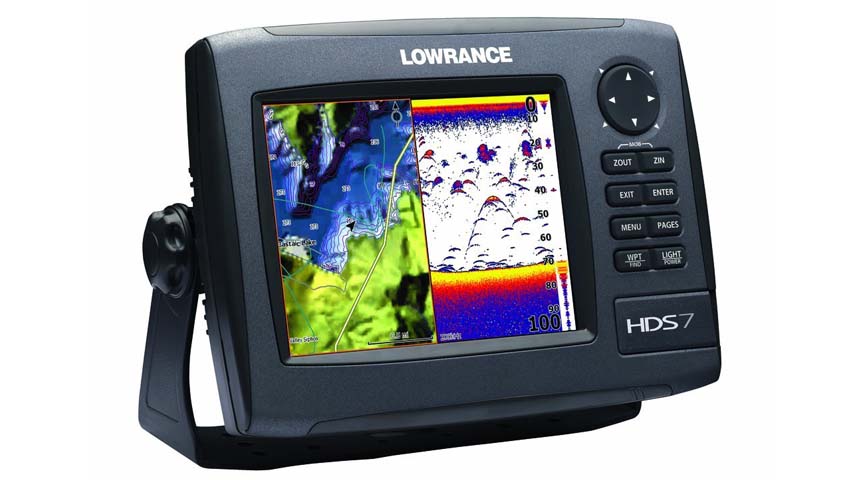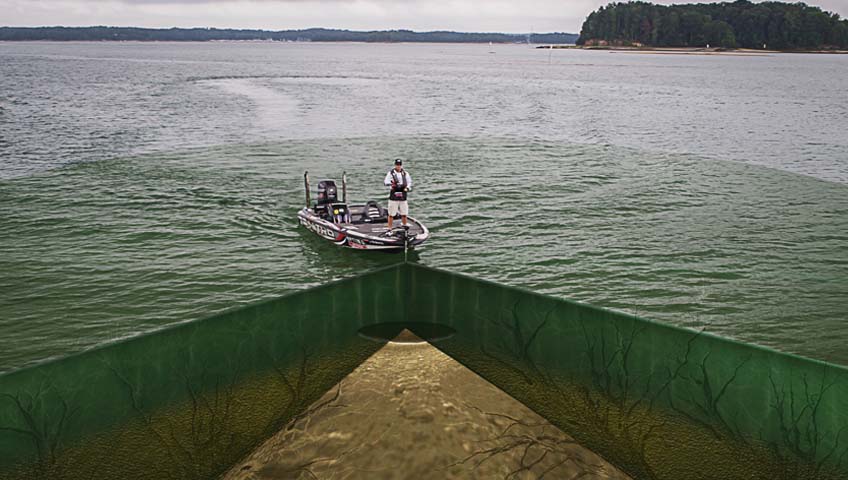A fishfinder or sounder is an instrument used to locate fish underwater by detecting reflected pulses of sound energy, as in sonar. A modern fishfinder displays measurements of reflected sound on a graphical display, allowing an operator to interpret information to locate schools of fish, underwater debris, and the bottom of body of water. Fishfinder instruments are used both by sport and commercial fishermen. Modern electronics allows a high degree of integration between the fishfinder system, marine radar, compass and GPS navigation systems.
In operation, an electrical impulse from a transmitter is converted into a sound wave by an underwater transducer, called a hydrophone, and sent into the water. When the wave strikes something such as a fish, it is reflected back and displays size, composition, and shape of the object. The exact extent of what can be discerned depends on the frequency and power of the pulse transmitted. Knowing that the speed of the wave in the water is 4921 ft/s (1500 m/s) in seawater, 4800 ft/s (1463 m/s) in freshwater (typical values used by commercial fish finders), the distance to the object that reflected the wave can be determined. The process can be repeated up to 40 times per second and eventually results in the bottom of the ocean being displayed versus time.
The temperature and pressure sensitivity capability of fish finder units allow one to identify the exact location of the fish in the water by the use of a temperature gauge. Functionality present in many modern fish finders also have track back capabilities in order to check the changes in movement in order to switch position and location whilst fishing.


